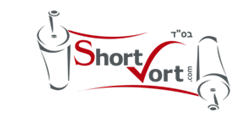
All posts in: Tetzaveh
-
7 years ago
Why is the inner mizbeyach not mentioned until Tetzaveh?
All the Mishkan keilim and structural stuff is all mentioned in parshas Terumah. With 2 exceptions. The kiyor (sink/washing basin) is only mentioned in Ki Sissa, ..
Written by D Fine
-

-
7 years ago
Isn’t something missing?
There are three main ideas that seem to be present on the macro level in Parshat Tetzaveh – the clothes of the Kohen Gadol, the korbonos (sacrifices), and the fact ..
Written by Jeremy
-
7 years ago
A bell of RESPECT!
Every Kohen (priest) who served in the temple wore four special garments, including a shirt, pants, belt, and turban, all of which were made of white linen. The Kohen ..
Written by Rafi Jager
-
7 years ago
2 Rebbes on the possuk..”Vyikchu eilecha shemen zach kosis lamo’or lha’alos ner tomid”
The possuk states “they Shall take for you pure olive oil, Pressed for the Light” R’Moshe Leib M’Sassov says theat the verse means somthing ..
Written by Benjamin A Rose
-
7 years ago
Parashas Tetzaveh – Clothed in Hidden Lessons (long dvar Torah)
Last week’s sedra dealt exclusively with the building of the Mishkan and it’s vessels, this week the theme continues with the building of the temple ..
Written by Daniel Sandground
-
7 years ago
The Nes of the Ner Maarvi
The candles of the Menorah were filled with oil to last through the night. The Ner Maaravi miraculously lasted all day until the next night. Rav Yehonoson Eibushitz ..
Written by Benjamin A Rose
-
7 years ago
Difference between Mishkan and egel
The Kuzari asks what the difference between the Mishkan and the egel haza’hav is; both were (golden) structures which were intended to have the effect of bringing ..
Written by d fine
-
7 years ago
the Maase Choshev of ther Choshen and the Eifod!!
When describing the clothing of the Kohen Gadol the Torah uses the term “Maase Choshev” only by the Choshen and Eifod. Unkelos translates this to mean ..
Written by Benjamin A Rose
-
7 years ago
You, yes you!
The first words in our sedra are instructions from HaShem to Moshe ‘and you, command Bnei Yisrael…’ But Moshe has been conveying instructions regarding the Mishkan ..
Written by d fine
-
7 years ago
Is Moshe Rabbeinu Really Missing??
The only Parsha (since He was Born and forgetting much of Dvorim where Moshe speaks in first Person) where we do not find Moshe Rabbeinu’s name written is Parshas ..
Written by Benjamin A Rose


